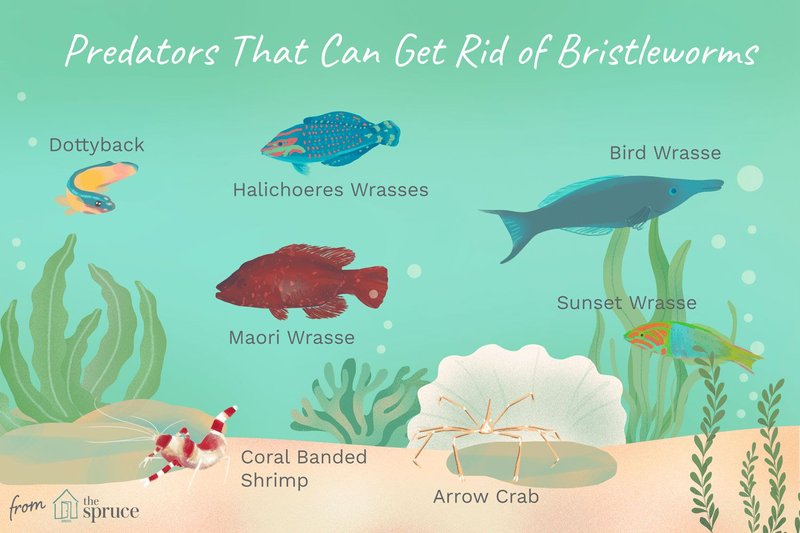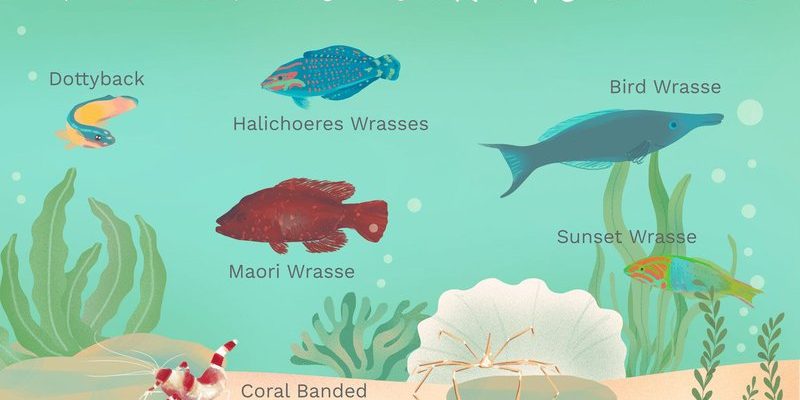
Imagine your aquarium as a bustling city ecosystem, where each species plays a specific role. Just as urban wildlife helps control pest populations, the right predators can keep bristle worms at bay. This article will walk you through some of the top natural predators you can introduce to your setup, helping you maintain a healthy environment that’s thriving with life.
Understanding Bristle Worms
Before diving into the solutions, it’s important to understand what bristle worms are. These soft-bodied creatures can be found in both saltwater and freshwater environments. They’re generally harmless but can become a problem when their populations explode. Think of them as the unruly neighbors who don’t follow community guidelines—they might seem harmless at first, but they can create chaos in your carefully organized ecosystem.
Bristle worms are scavengers, meaning they feed on decaying matter, leftover food, and even live plants in some cases. They can multiply quickly, which is why it’s essential to not only manage their numbers but also create a balanced ecosystem that supports healthy growth of other species. Here’s where their natural predators come into play.
1. Wrasse Fish: Nature’s Pest Control
Wrasse fish are known for their vibrant colors and energetic personalities. They’re often considered reef cleaners because they actively seek out and consume bristle worms. With varieties like the Six-Line Wrasse or the Cleaner Wrasse, you not only get a beautiful addition to your aquarium but also a reliable predator that loves to snack on these pesky worms.
These fish tend to be quite active, darting about and foraging in the substrate and live rock. Wrasses are also known for their lively behavior, making them enjoyable to watch. Just remember, they can be territorial, so it’s best to introduce them into an aquarium that’s appropriately sized and well-planned.
Why Choose Wrasse Fish?
There are several reasons to consider wrasses for controlling bristle worm populations:
- Active Hunters: Wrasses are persistent foragers, so they won’t just sit around waiting for food.
- Colorful and Engaging: Their lively colors can brighten up your aquarium.
- Effective Control: They can significantly reduce the number of bristle worms in your tank.
2. Arrow Crabs: The Silent Predators
Another great option for controlling bristle worms is the arrow crab. These crabs are adept at hunting down bristle worms and can reach into crevices that fish might not. Imagine a tiny ninja, stealthily maneuvering through your aquascape to eliminate unwanted guests.
Arrow crabs are generally easy to care for and should adapt to most aquarium conditions, making them a versatile choice. However, they can sometimes be a bit shy, so giving them places to hide—like caves and overhangs—will help them settle in.
Benefits of Arrow Crabs
Here are a few reasons you might consider adding arrow crabs to your aquarium:
- Effective Worm Hunters: They’re skilled at finding and eating bristle worms.
- Low Maintenance: Generally easy to care for if you maintain good water quality.
- Unique Appearance: Their long legs and distinctive shape add interest to your tank.
3. Peppermint Shrimp: Tiny Heroes
If you’re looking for a smaller but mighty option, peppermint shrimp might be your best bet. These little scavengers do a fantastic job of eating bristle worms and are often introduced to tanks with a specific goal in mind: pest control.
Peppermint shrimp are quite social and often form small communities, adding a lively vibe to your aquarium. They love to scavenge, which makes them effective at finding and consuming bristle worms before they can cause any harm.
Advantages of Peppermint Shrimp
Here’s what makes peppermint shrimp a good choice for pest control:
- Small Size: They won’t disturb other species in your tank.
- Social Creatures: Their community-oriented nature can enhance the dynamics of your aquarium.
- Natural Behavior: They’re great at contributing to the ecosystem by cleaning up debris.
4. Flatworms: A Double-Edged Sword
Flatworms are a less conventional choice for controlling bristle worms. Some species of flatworms are known to feed on bristle worms, but introducing them requires careful consideration. While they can help keep worm populations in check, they can also become pests themselves if their numbers grow unchecked.
If you choose to introduce flatworms, it’s crucial to monitor their population closely. They can thrive in nutrient-rich environments, so maintaining a balanced diet for your fish and other clean-up crew members is essential.
Key Points About Flatworms
Consider these factors if you’re thinking about adding flatworms to your setup:
- Potential for Overpopulation: They can become a problem if not managed properly.
- Caution Required: Not all flatworms are beneficial, so research is key.
- Selective Predation: Some flatworms target bristle worms effectively.
5. Sea Stars: Nature’s Cleanup Crew
Sea stars, particularly those from the genus *Fromia*, can also help control bristle worm populations. These starfish are often overlooked but can be quite beneficial in a reef aquarium setting. They crawl along the substrate, using their tube feet to pry open and consume worms and other organic matter.
Keep in mind that sea stars require a special diet and specific water conditions to thrive. Make sure your aquarium is suitable for their needs so they can do their job effectively.
Why Sea Stars? Here are the Benefits
Here’s why sea stars might be a worthy addition to your aquarium:
- Natural Scavengers: They feed on a variety of organic material, including bristle worms.
- Low Maintenance: Once established, they typically require less attention than other predators.
- Unique Appeal: Their distinctive appearance adds character to any setup.
Keeping bristle worms under control doesn’t have to be a daunting task. With the right natural predators like wrasse fish, arrow crabs, peppermint shrimp, flatworms, and sea stars, you can create a harmonious ecosystem. Each of these creatures plays a role in maintaining balance, much like different members of a community working together for a common goal.
Before introducing any new species, it’s essential to consider your aquarium’s size, existing inhabitants, and overall ecosystem health. Doing a bit of homework can go a long way in ensuring that your tank remains a vibrant, thriving habitat for all its residents. Happy fish-keeping!

